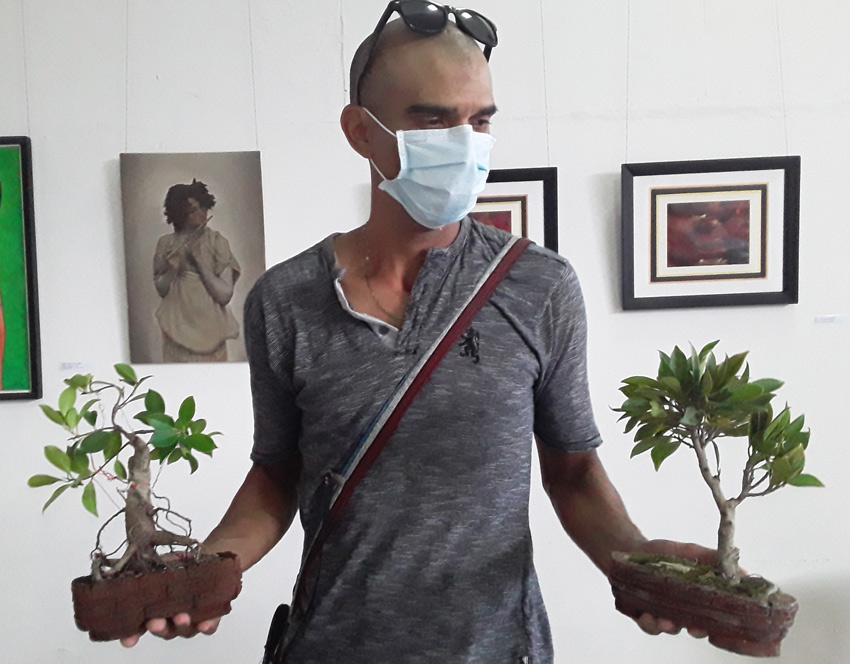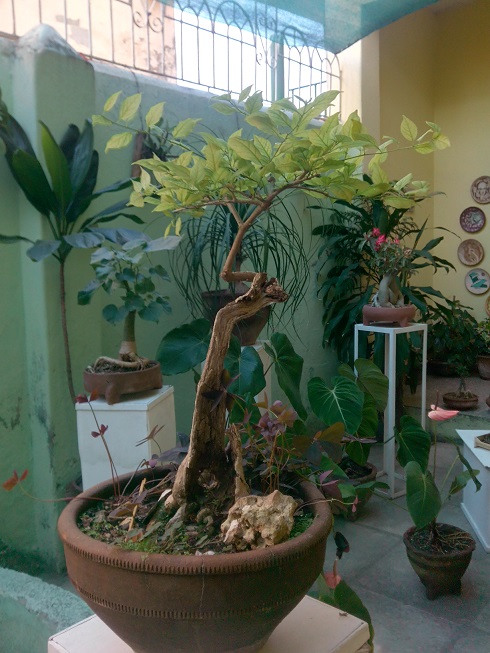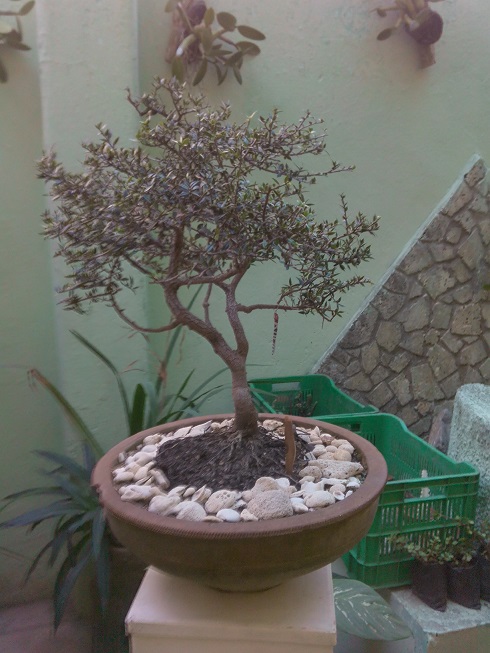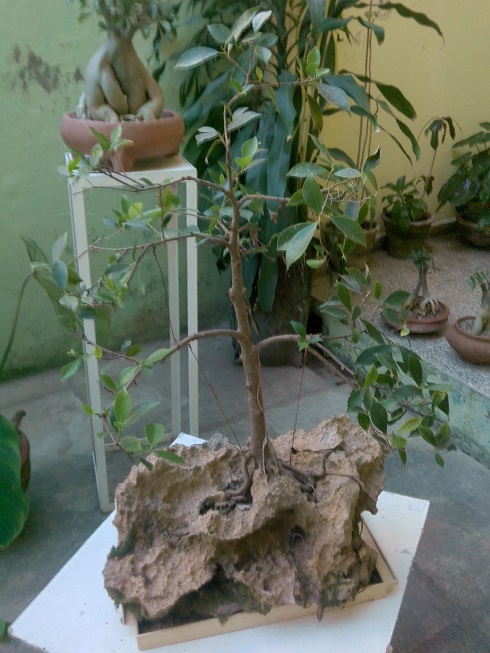
Around two thousand years ago, the art of bonsai originated in China, and little by little, this symbol, considered a bridge between the divine and the human, gained followers all over the world.
Among the locals who defend the difficult job of planting and caring for trees in pots is Wilner Rondón Peña, for whom it acquires a different meaning. With sensitivity and patience, he discovers in these living beings nuances that others pass unnoticed.
 Since last year, his desire to sow in others the love for these small giants took new roots with the emergence of the Bonsai Club of Las Tunas, whose antecedents go back to a workshop given at the Provincial Council of Plastic Arts (CPAP).
Since last year, his desire to sow in others the love for these small giants took new roots with the emergence of the Bonsai Club of Las Tunas, whose antecedents go back to a workshop given at the Provincial Council of Plastic Arts (CPAP).
During one month I provided the participants with tools to identify, define and cultivate them...; especially the Japanese four-branch tree. Due to the results achieved, the club was created and since August 2020 we have been training to perfect this work, explained the coordinator.
Today there are about 10 members, who created a Facebook page (Bonsai Club. Las Tunas. Cuba) to share their experiences. Regarding the traditional technique, we try to make them in our own way, a little more contemporary. Maintaining them requires a lot of work because it is not done according to the years they have or are worked, but the years they appear to have.
He tells me that it all stems from his desire to bring trees home. "When I was a teenager, I used to put little seedlings in cans, water them and, although I didn't have much knowledge, I had the main thing: love", says the man who, in 15 years of work with these adorable dwarfs, has made a hundred of them.
"As I began to read about the subject, I said: I would like to try to 'make a tree', take it home and work it, but without hurting it. I talk to them and, in a way, they also talk to me. But it is a work of many sacrifices, every day we have to water them, remove the leaves that don't grow, sometimes wire them up.
 "You wire them and they yield because it is a way to give them shape according to the design; there are techniques according to size, pruning, roots, trunk.
"You wire them and they yield because it is a way to give them shape according to the design; there are techniques according to size, pruning, roots, trunk.
"And we work by branches, from the widest part attached to the root. We must first be clear about the idea for it to work and take into account the guidelines, the triangularity, and its harmony. It is done, not expected to be done.
Then he tells me about styles such as Hokidachi (broom), Fukinagashi (windswept), Bunjingi (literati), and others, which glimpse the silhouettes and shapes of such special friends of the flora.
This young man comes from the performing arts (puppet theater Los Zahoríes and Total Teatro) and is self-taught in his green field. "Books have been my school", he points out.
Closer to mother earth, that's how you feel when you talk to him. The bonsai is not only a small tree. If it is not timber, it is not classified as such.
"They can measure from 0 to 5 millimeters to one meter, and even the smallest ones must show all four branches (if they don't have them, they must be grafted), and be in harmony with the pot, even if they are carried on only one finger", he explains.
 One of the projects that occupy him more deals with the defense of the Guana, which is a local plant by nature and, according to Victor Marrero, Historian of the City, it is in our shield. There is a lot of ignorance about it, there are even those who confuse it with guano and make hats with its parts.
One of the projects that occupy him more deals with the defense of the Guana, which is a local plant by nature and, according to Victor Marrero, Historian of the City, it is in our shield. There is a lot of ignorance about it, there are even those who confuse it with guano and make hats with its parts.
Its leaves are heart-shaped and the flowers are yellow, while the trunk is yellow-green. It hardly exists anymore. With bonsais, we show others how real and wonderful it can be. I have even given some of these plants as gifts to certain entities and planted others in different parks. I dream of having colonies of this tree in our fields again.
An inveterate follower of the Japanese school, he walks through this universe of love for these tree sculptures that have delighted, for example, the Provincial Council of Plastic Arts, the Hermanos Saíz Association (AHS), and the Union of Writers and Artists of Cuba (UNEAC) in the province.
"There are those who think that to make a bonsai is to destroy the tree or to make it undergo work, but it is not like that; it is a sensitive work in which it is respected", he clarifies.
The interview ends and, immediately, his hands return to the earth, that vital space where he has found happiness.





